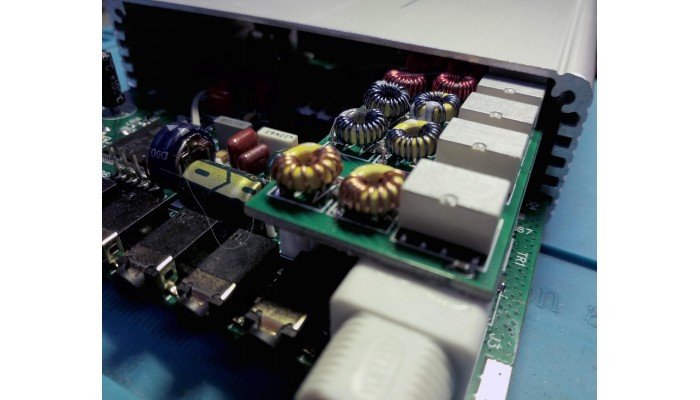I did a joint activation last Saturday with Karl (OE6LKG) on OE/KT-098, Peterer Riegel. The weather was very good and I was looking forward to trying out Karl’s new Minion Mini transceiver from QRPver:
The rig itself is incredibly small for a 9 band transceiver, and relatively simple to operate. I charged up a LiFePO battery so we would have the full 8 watts+ out. The walk up was lovely, and the area was noticeably cooler than in the city, it was a pleasant 18C. We got to the summit and set up, using an OCFD, 10m mast and Elecraft T1 tuner.
The first thing I noticed was that there is no iambic keyer built in. You could use a single lever paddle fine, just no squeeze keying (to the best of my knowledge). Thankfully, the Palm Paddle Code Cube makes a very good external keyer for this rig, so not the end of the world. However, when we started to call on 20m the problems really began: we were getting spotted OK, but could not hear the answering stations! This caused a lot of confusion, for which I am very sorry. I would have posted earlier, but I had to take the rig home and go over it thoroughly to find out what was happening. One of the menu settings was CW detune, which detunes the receiver from the transmit frequency. On the hill, by default, it was set to 700Hz. Naturally, I set it to zero and called again: still no joy.
In the end we gave up and used my MTR3b (thank God I took it along as a spare). After much more fiddling and changing of antennas we finally got the summit activated. Thanks to everyone who had the patience to stick around and work us.
Well, back at home I eventually fished out the Minion Mini and started to have a play around, using my KX3 and panadapter to see what was going on. I found out that to receive on the frequency you call on, the receiver must be detuned to exactly 500Hz. Which explains why 700Hz and 0Hz did not work for us on the hill. Now. I do not have as much experience as some, so I’m not sure quite what to make of this setting. I’m used to receiving on my transmit frequency by default, and changing that only when I want to work split of something. Having worked out how to set the radio up for a QSO, I decided to put a call out on 14.0350 MHz and see what happened. No one came back to the call so I had a look on the RBN network to see how I was getting out:
What I immediately noticed was that I had been spotted on the second harmonic (28.070 MHz) at a higher level than some skimmers were hearing me on 14.035 MHz. I reset HDSDR for 28 MHz and sent out an RBN test on 14.0350, and this is what the panadapter showed:
So definitely spurious harmonic emissions, not just in my area, but loud enough to be picked up in Sweden via sporadic E (well at least 10m was open HI HI). Like I said above, I’m no expert. So if anyone has more to add on this then I would be very interested. I tried to contact QRPver, alas to no avail.
73 de OE6FEG / M0FEU
Matt
